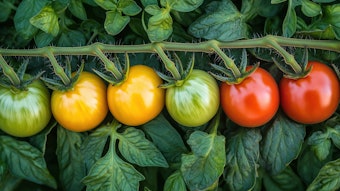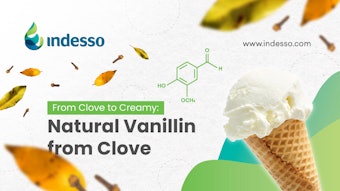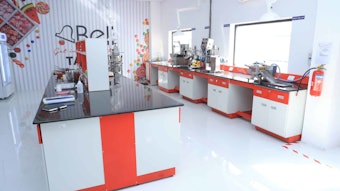Scientists from the Technische Universität München (TUM) have found that the characteristic aroma of a fresh strawberry is the result of around a dozen different aroma compounds; HDMF (synonym: 4-hydroxy-2,5-dimethyl-3(2H)-furanone), which is also known under the brand name Furaneol, plays a particularly important role.
The results appeared in the study “Structural basis for the enzymatic formation of the key strawberry flavor compound 4-hydroxy-2,5-dimethyl-3(2H)-furanone” by André Schiefner, Quirin Sinz, Irmgard Neumaier, Wilfried Schwab and Arne Skerra, which appeared in The Journal of Biological Chemistry on April 15, 2013.
Wilfried Schwab, head of biotechnology of natural products at TUM, who has spent many years researching the biological structure of this substance, said: “A ripe strawberry has a particularly high concentration of this compound – up to 50 milligrams per kilo – which lies a far above the odor threshold. This compound gives the ripe fruit its characteristic caramel-like aroma.”
HDMF is also found in pineapples and tomatoes. In plants, the aroma develops in a multi-step pathway from the from the fruit sugar fructose.
“We were particularly interested in the biocatalytic process that leads up to the final compound,” said Arne Skerra, the TUM chair of biological vhemistry.
In this process, a molecule precursor binds to the FaEO enzyme (Fragaria x ananassa enone oxidoreductase), which converts it into the final product, namely HDMF. The TUM scientists were able to map this reaction path in detail. To understand how enzymes catalyze the biosynthesis of these new metabolic products, the research team took advantage of X-ray structural analysis. This allowed them to view the 3D structure of the molecules.
“For the strawberry aroma, we investigated altogether six different enzyme-molecule combinations–and ended up understanding how FaEO produces the HDMF flavor compound,” said André Schiefner, chair of biological chemistry.
In the course of their research, the scientists discovered that the catalytic reaction involved a hitherto unknown mechanism. The compound is reduced and electrons are specifically transferred to a particular part of the molecule. Thus, the FaEO enzyme represents the first member of new class of biocatalysts – a discovery which could lead to useful applications in industrial biotechnology.
The latest research results provide valuable insight into the development of taste in widespread cultivated plants, as Skerra explained: “Unlike coffee or vanilla, the biochemical processes that produce the strawberry aroma are very complex. But now our TUM research team has shed light on an important step in its biosynthesis.”
According to the study, biosynthetic processes might be used soon to prepare the true flavor of strawberry from fructose, for example to make drinks or food such as yogurt taste even more like the real thing.










